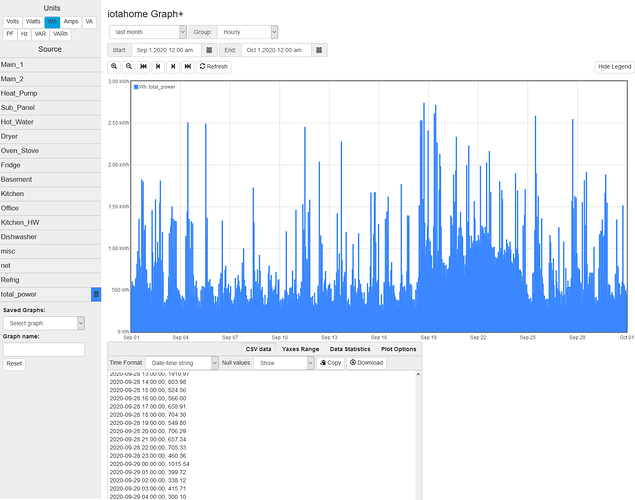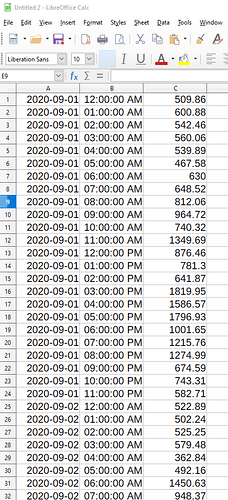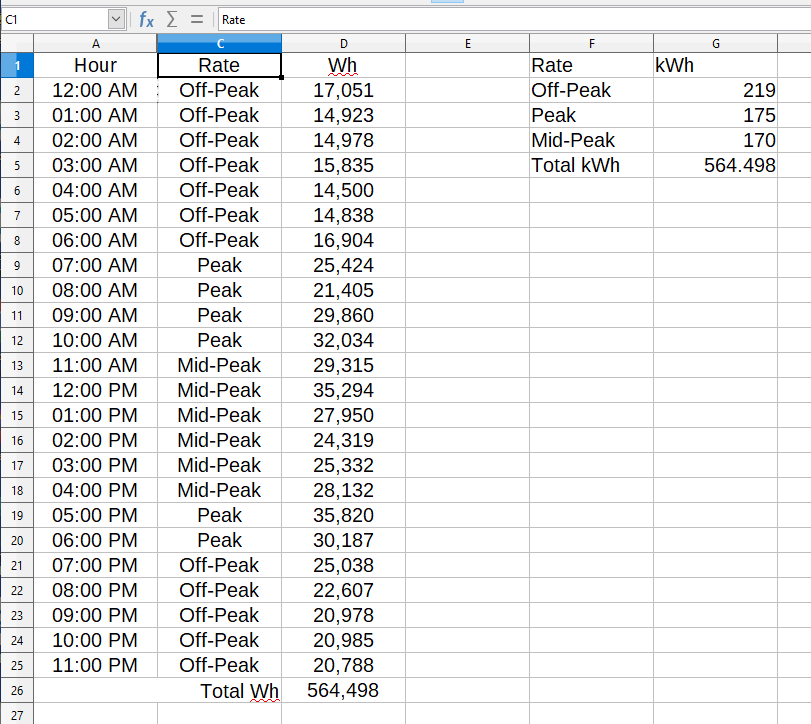Does IoTaWatt have ability to monitor main house, in-law addition and workshop separately for time of use billing? I would need to monitor on-peak times between 7am and 11am and between 5pm and 7pm, mid-peak times between 11am and 5pm, and off-peak times between 7pm and 7am. I would be looking to summarize this information monthly.
There’s not a way to have IoTaWatt do it, but you can easily export the data to a spreadsheet to do it. Here’s what I just did:
In Graph+ I plotted last month’s Wh and grouped by hour, then selected CSV data:
I clicked copy to capture the data to the clipboard and pasted the data to a spreadsheet as comma and blank delimited. With Libre-Office, it places the time in column B and the Wh for that hour in column C.
Now I created another tab to summarize the data. There are a million ways to do this, but I chose a way that allows defining any number of rate periods with non-contiguous time as in the Peak rate.
You can see that I created a table of the 24 hours. Then in the next column (Rate) I specified the rate that is applied to that hour. Next, I used the SUMIF function to sum the Watt-hours for each hour. You can see the function here.

With the period Wh summarized by hour and categorized by Rate, It’s a simple matter to use SUMIF again to add up all of the hourly Wh in each rate category:
You can add the kWh Rate in column G and then compute the Cost in column F, then total.
The spreadsheet will handle up to 31 days in the Hourly Wh sheet. Once the rates are set, you would only need to paste in the data from Graph+ to compute the bill. This is easily extended to handle multiple bills.
Ok, that will work. The workshop would be shared cost. We have a shared well with the pump powered from the main house. This could be subtracted from the main house kw output and added to the workshop kw output. Use graph+ to capture the outputs and grab the CSV data from that to populate the spreadsheet. Thanks!
Here’s the spreadsheet.
Rate summarizer.ods (32.7 KB)
and saved in excel format
Rate summarizer.xlsx (23.3 KB)



